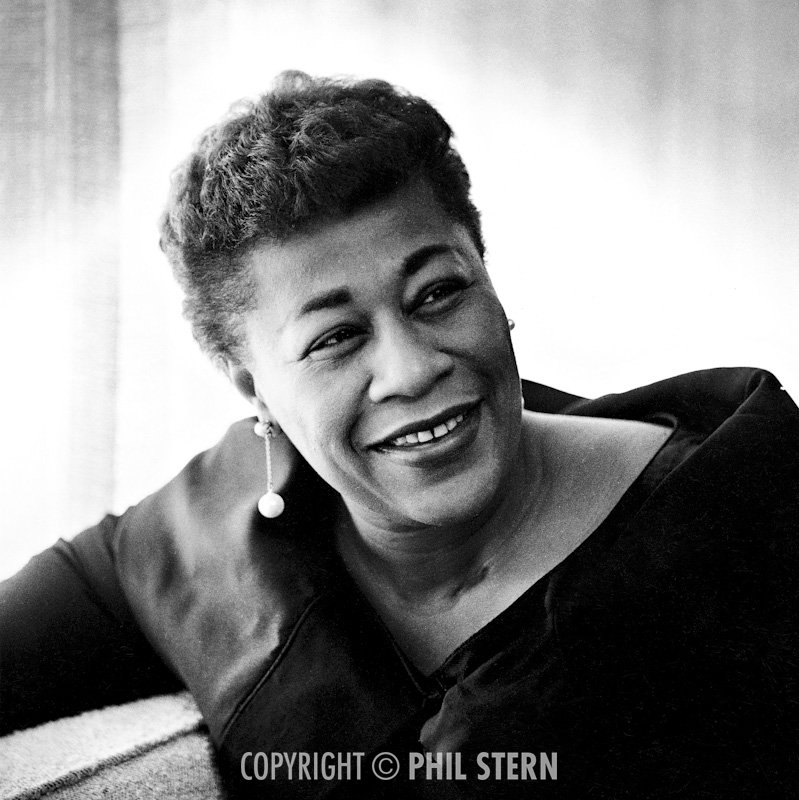The First Lady of Song, April in Paris, and Wild Bill Davis

April is book-ended, give or take a few days, by the birthdays of Billie Holiday and Ella Fitzgerald; Billie on April 7, 1915, Ella on April 25, 1917. Both came to prominence in the late thirties when jazz had reached its first stage of maturity, and in their respective ways, they remain contrasting paragons of the art. Billie brought out the pathos in songs about heartache and betrayal, and she lived every nuance of it. Ella found a song’s inner beauty and rode the crest of its melodic contours, not superficially, but ever buoyant.
Nearly 20 years since her death in 1996, she remains the greatest interpreter of American popular song. Through the songbook albums she made in the ’50s and ’60s, the First Lady of Song did wonders to enhance the timelessness of tunes by George Gershwin, Cole Porter, Irving Berlin, Harold Arlen, Duke Ellington, Rodgers and Hart, Jerome Kern, and Johnny Mercer. And as you’ll see below, she did the same for a seasonal classic by composer Vernon Duke and lyricist Yip Harburg.
The great Boston-born drummer Roy Haynes knows from singers. He worked with Ella and Sarah Vaughan in the fifties, and toured with Lady Day in her final year, 1959. In a New York Times feature, he told Ben Ratliff, “I played with Ella Fitzgerald for the whole summer of 1952. That was hard. It wasn’t like playing with Sarah. Hank Jones was the pianist and Nelson Boyd was the bassist. It was like playing with a big band; she had a lot of energy, and she could swing. One night we played in Rhode Island, a club. That weekend, opening up, they had one of those organ trios. Now, this organ trio was on fire. And after that, Ella said to us, ‘Y’all are not swinging.’ Can you imagine me and Hank Jones on the bandstand not swinging? But it’s understandable. She was feeling the threat of having that organ trio opposite her.”
Haynes added a telling anecdote about a Sunday in which they played an afternoon show outside of Baltimore, then high tailed it back to New York for a set at the Renaissance in Harlem. “Traffic was backed up all the way from Maryland to New York. When we got to New York, it was twelve midnight. She sat in the car and cried; she said it was the first time she ever missed a gig. And she gave us some money anyhow.”
Ella’s 98th birthday anniversary is today. She was featured in the opening hour of last night’s Jazz à la Mode, which is available through next Friday on-demand. Click here for the podcast. And click here to read vocalist Carol Sloan’s sweet recollections of personal experiences with Ella. Her SloanView blog notes that Ella’s favorite song to sing was Billy Strayhorn’s “Something to Live For.”
How’s this for the kind of swing Haynes experienced? Of the numerous concert clips of Ella singing “Mack the Knife,” here’s my favorite, complete with allusions to Bobby Darin and her requisite parody of Louis Armstrong. That’s Tommy Flanagan at the piano and Les Spann on guitar.
Ella recorded “April in Paris” with Pops in 1956. Their take was at ballad tempo, but here in Brussels she sings it up. This 1957 footage features the rarely seen pianist Don Abney, guitarist Herb Ellis, bassist (and ex-husband) Ray Brown, and drummer Jo Jones.
Speaking of “April in Paris,” Ted Gioia, writing in The Jazz Standards, says it took a long time for the 1933 song by to inspire much more than “tepid” versions by jazz players, even Coleman Hawkins and Charlie Parker. But he credits Thelonious Monk’s trio recording of 1947 for finally “squeezing the romanticism” out of the tune and replacing it with “a more eccentric itinerary of spring in the City of Light.” And he cites Count Basie’s “extravagant performance,” complete with its false endings, as the “most celebrated jazz version” of the song. Basie’s take was arranged by Wild Bill Davis, the organist who established the modern organ combo sound that drove Ella to swing even harder and ushered in the vogue for the Hammond B3 that took off like wildfire in the hands of Jimmy Smith in the mid-’50s.
I saw Davis when he was touring with Duke Ellington in the early ’70s. His B3 added a down-home flavor to a couple of small combo Ellington dates in the late ’60s, and he was featured on “Blues for New Orleans,” the opening title on Ellington’s New Orleans Suite, in 1970. Click here for this soulful blues that proved to be Johnny Hodges’s final performance; he died a few days later of a heart attack at age 63.
Here’s footage that’s recently cropped up on YouTube of Wild Bill with drummer Chris Columbus and guitarist Floyd Smith in Paris in 1972. Smith was one of the first six-stringers to play electric guitar; his 1939 showcase with Andy Kirk’s Orchestra, “Floyd’s Guitar Blues,” was the first hit record that featured electric guitar. What a rare delight it is to see him 33 years later playing “Without a Song.”